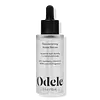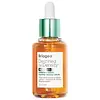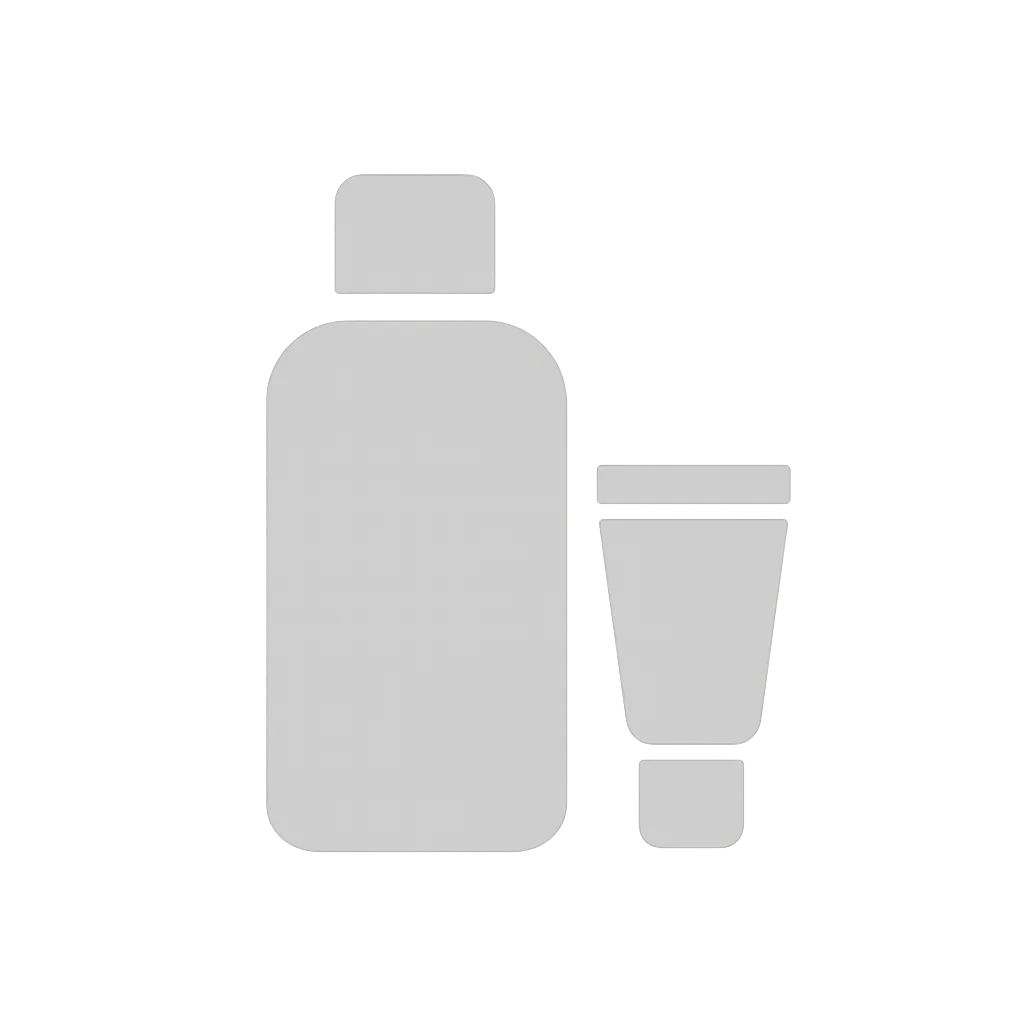What's inside
What's inside
 Key Ingredients
Key Ingredients

 Benefits
Benefits

 Concerns
Concerns

 Ingredients Side-by-side
Ingredients Side-by-side

Water
Skin ConditioningGlycerin
HumectantPolysorbate 20
EmulsifyingRosmarinus Officinalis Leaf Extract
AntimicrobialCaffeine
Skin ConditioningPisum Sativum Peptide
Skin ConditioningAloe Barbadensis Leaf Juice
Skin ConditioningZingiber Officinale Root Extract
MaskingMentha Piperita Leaf Extract
Skin ConditioningTocopheryl Acetate
AntioxidantPolyquaternium-10
Polyquaternium-81
CleansingPropylene Glycol
HumectantTetrasodium Glutamate Diacetate
Ethylhexylglycerin
Skin ConditioningPhenoxyethanol
PreservativeSodium Hydroxide
BufferingCitric Acid
BufferingParfum
MaskingWater, Glycerin, Polysorbate 20, Rosmarinus Officinalis Leaf Extract, Caffeine, Pisum Sativum Peptide, Aloe Barbadensis Leaf Juice, Zingiber Officinale Root Extract, Mentha Piperita Leaf Extract, Tocopheryl Acetate, Polyquaternium-10, Polyquaternium-81, Propylene Glycol, Tetrasodium Glutamate Diacetate, Ethylhexylglycerin, Phenoxyethanol, Sodium Hydroxide, Citric Acid, Parfum
Water
Skin ConditioningPropanediol
SolventGlycerin
HumectantPentylene Glycol
Skin ConditioningBetaine
HumectantCoco-Caprylate/Caprate
EmollientCaffeine
Skin ConditioningCopper Tripeptide-34
Skin ConditioningNiacinamide
SmoothingCastor Oil/Ipdi Copolymer
Aloe Barbadensis Leaf Juice
Skin ConditioningCoffea Arabica Seed Oil
MaskingPanax Ginseng Root Extract
EmollientBiotin
AntiseborrhoeicCaprylic/Capric Triglyceride
MaskingLimnanthes Alba Seed Oil
Skin ConditioningCarbomer
Emulsion StabilisingLindera Strychnifolia Root Extract
Skin ConditioningHippophae Rhamnoides Oil
EmollientTrisodium Ethylenediamine Disuccinate
Acacia Senegal Gum
MaskingXanthan Gum
EmulsifyingPhyllanthus Emblica Fruit Extract
HumectantTocopheryl Acetate
AntioxidantHelianthus Annuus Hybrid Oil
EmollientLamium Album Extract
AstringentPlantago Psyllium Seed Extract
Skin ConditioningPanthenol
Skin ConditioningC12-15 Alkyl Benzoate
AntimicrobialSodium Metabisulfite
AntioxidantLarix Europaea Wood Extract
HumectantGlycine
BufferingTocopherol
AntioxidantUbiquinone
AntioxidantZinc Chloride
AntimicrobialSimmondsia Chinensis Seed Oil
EmollientLithospermum Erythrorhizon Root Extract
Skin ConditioningCamellia Sinensis Leaf Extract
AntimicrobialCitric Acid
BufferingPotassium Sorbate
PreservativeSodium Benzoate
MaskingSodium Hydroxide
BufferingBenzyl Alcohol
PerfumingCaramel
Cosmetic ColorantWater, Propanediol, Glycerin, Pentylene Glycol, Betaine, Coco-Caprylate/Caprate, Caffeine, Copper Tripeptide-34, Niacinamide, Castor Oil/Ipdi Copolymer, Aloe Barbadensis Leaf Juice, Coffea Arabica Seed Oil, Panax Ginseng Root Extract, Biotin, Caprylic/Capric Triglyceride, Limnanthes Alba Seed Oil, Carbomer, Lindera Strychnifolia Root Extract, Hippophae Rhamnoides Oil, Trisodium Ethylenediamine Disuccinate, Acacia Senegal Gum, Xanthan Gum, Phyllanthus Emblica Fruit Extract, Tocopheryl Acetate, Helianthus Annuus Hybrid Oil, Lamium Album Extract, Plantago Psyllium Seed Extract, Panthenol, C12-15 Alkyl Benzoate, Sodium Metabisulfite, Larix Europaea Wood Extract, Glycine, Tocopherol, Ubiquinone, Zinc Chloride, Simmondsia Chinensis Seed Oil, Lithospermum Erythrorhizon Root Extract, Camellia Sinensis Leaf Extract, Citric Acid, Potassium Sorbate, Sodium Benzoate, Sodium Hydroxide, Benzyl Alcohol, Caramel
Ingredients Explained
These ingredients are found in both products.
Ingredients higher up in an ingredient list are typically present in a larger amount.
Aloe Barbadensis Leaf Juice comes from leaves of the aloe plant. Aloe Barbadensis Leaf Juice is best known for helping to soothe sunburns. It is also anti-inflammatory, moisturizing, antiseptic, and can help heal wounds.
Aloe is packed with good stuff including Vitamins A, C, and E. These vitamins are antioxidants, which help fight free-radicals and the damage they may cause. Free-radicals are molecules that may damage your skin cells, such as pollution.
Aloe Barbadensis Leaf Juice also contains sugars. These sugars come in the form of monosaccharides and polysaccharides, folic acid, and choline. These sugars are able to help bind moisture to skin.
It also contains minerals such as calcium, 12 anthraquinones, fatty acids, amino acids, and Vitamin B12.
Learn more about Aloe Barbadensis Leaf JuiceCaffeine is most associated with coffee, tea, and cacao. In skincare, it helps with calming inflammation and is rich in antioxidants.
While caffeine is used to treat cellulite and and dark circles, further studies are needed to prove this. It has been believed to help with these skin conditions due to its ability to dilate blood vessels and increase blood flow.
Some studies are looking into caffeine's ability to protect against UV rays.
Learn more about CaffeineCitric Acid is an alpha hydroxy acid (AHA) naturally found in citrus fruits like oranges, lemons, and limes.
Like other AHAs, citric acid can exfoliate skin by breaking down the bonds that hold dead skin cells together. This helps reveal smoother and brighter skin underneath.
However, this exfoliating effect only happens at high concentrations (20%) which can be hard to find in cosmetic products.
Due to this, citric acid is usually included in small amounts as a pH adjuster. This helps keep products slightly more acidic and compatible with skin's natural pH.
In skincare formulas, citric acid can:
While it can provide some skin benefits, research shows lactic acid and glycolic acid are generally more effective and less irritating exfoliants.
Most citric acid used in skincare today is made by fermenting sugars (usually from molasses). This synthetic version is identical to the natural citrus form but easier to stabilize and use in formulations.
Read more about some other popular AHA's here:
Learn more about Citric AcidGlycerin is already naturally found in your skin. It helps moisturize and protect your skin.
A study from 2016 found glycerin to be more effective as a humectant than AHAs and hyaluronic acid.
As a humectant, it helps the skin stay hydrated by pulling moisture to your skin. The low molecular weight of glycerin allows it to pull moisture into the deeper layers of your skin.
Hydrated skin improves your skin barrier; Your skin barrier helps protect against irritants and bacteria.
Glycerin has also been found to have antimicrobial and antiviral properties. Due to these properties, glycerin is often used in wound and burn treatments.
In cosmetics, glycerin is usually derived from plants such as soybean or palm. However, it can also be sourced from animals, such as tallow or animal fat.
This ingredient is organic, colorless, odorless, and non-toxic.
Glycerin is the name for this ingredient in American English. British English uses Glycerol/Glycerine.
Learn more about GlycerinSodium Hydroxide is also known as lye or caustic soda. It is used to adjust the pH of products; many ingredients require a specific pH to be effective.
In small amounts, sodium hydroxide is considered safe to use. However, large amounts may cause chemical burns due to its high alkaline.
Your skin has a natural pH and acid mantle. This acid mantle helps prevent harmful bacteria from breaking through. The acid mantle also helps keep your skin hydrated.
"Alkaline" refers to a high pH level. A low pH level would be considered acidic.
Learn more about Sodium HydroxideTocopheryl Acetate is AKA Vitamin E. It is an antioxidant and protects your skin from free radicals. Free radicals damage the skin by breaking down collagen.
One study found using Tocopheryl Acetate with Vitamin C decreased the number of sunburned cells.
Tocopheryl Acetate is commonly found in both skincare and dietary supplements.
Learn more about Tocopheryl AcetateWater. It's the most common cosmetic ingredient of all. You'll usually see it at the top of ingredient lists, meaning that it makes up the largest part of the product.
So why is it so popular? Water most often acts as a solvent - this means that it helps dissolve other ingredients into the formulation.
You'll also recognize water as that liquid we all need to stay alive. If you see this, drink a glass of water. Stay hydrated!
Learn more about Water